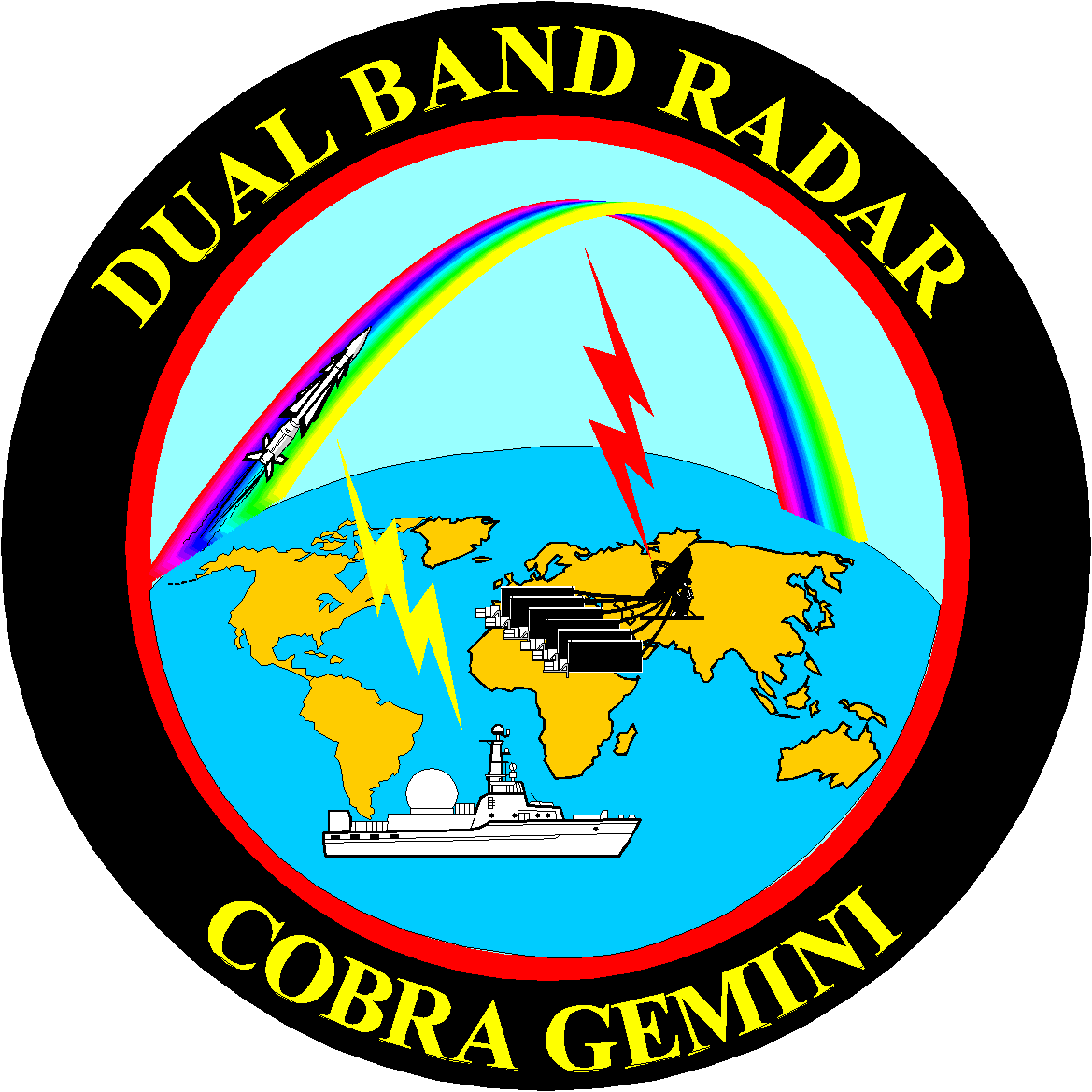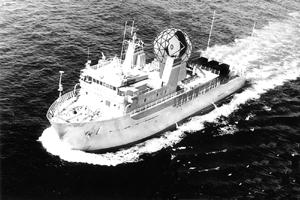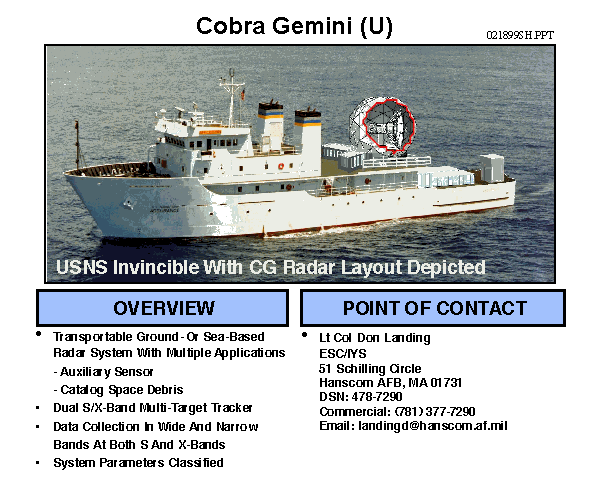



COBRA GEMINI
 Electronic Systems Center is developing a program that will result
in what is believed to be the first dual-band, sea- and land-based radar system. The Cobra Gemini program will acquire three X- and S-band radar systems that can detect,
acquire, track and collect both high-precision metric and signature data on targets of interest. CG is designed to be transportable and capable of operating anywhere in the world in either a land or sea-based mode. This program is included with other funding in Program Element 31315.
Electronic Systems Center is developing a program that will result
in what is believed to be the first dual-band, sea- and land-based radar system. The Cobra Gemini program will acquire three X- and S-band radar systems that can detect,
acquire, track and collect both high-precision metric and signature data on targets of interest. CG is designed to be transportable and capable of operating anywhere in the world in either a land or sea-based mode. This program is included with other funding in Program Element 31315.
Properly deployed ship-based radars with ranges of about 2000 km can provide
a forward-based radar missile defense interceptor commit function against many of the potential threats to the
US. These radars can remain silent until cued by DSP or SBIRS-High. Because they
would be difficult to target due to mobility and unknown location of ships, they
would add robustness against defense suppression attacks, particularly before SBIRS-Low
is available. Sea-based radars could be added to the NMD architecture to provide
robustness against certain defense suppression attacks before SBIRS-Low is
available, and in some scenarios, to provide an earlier interceptor commit.
Two such radars could be procured, installed on existing ships, and
integrated with NMD BM/C3 for a total cost of less than $0.5B. O&S
costs for the ships would total about $0.03B/year.
The system, also known as STEEL TRAP, will use a two frequency dish-based radar that will serve a dual role. The primary mission of CG is to support the Central Measurement and Signatures Intelligence (MASINT) Office (CMO) requirement for ballistic missile data collection. CG will be capable of detecting, acquiring, tracking, and collecting both high precision metric and signature data on tactical ballistic missile launches, but it can also lend support to future military operations, since metric data can provide launch and impact point estimates as well as basic missile trajectory.
Although phased-array technology may provide better surveillance and track resolution, cost considerations dictated the use of a dish system in the Prototype.
Tracking is performed at S-band. The X-Band frequency, essential for signature data collection and for supporting the wide bandwidth imaging requirement, is not well-suited for initial target acquisition or tracking complexes which have significant spatial separation. At S-Band, the area of the beam is ten times greater than at X-Band and results in an excellent acquisition and tracking capability.
X-band monopulse is not being considered due to cost and complications to feed and receiver design.
The maximum range window to be covered in bow-tie search mode is 1200 km. In the nominal mission scenario this window will extend from 300 km range to 1500 km range with 1 second dwell [1 second of noncoherent integration].
The original program concept called for one prototype system and two production radar systems. The first prototype system was designed and built by MIT/LL under contract to ESC, with the remaining two (2) systems to be built by industry via a competitive follow-on production contract. An option in the contract could fund up to 10 of the radar systems.
Because of funding limitations, the original plan to have a follow-on production contract for two additional CG radar systems has been postponed indefinitely.

An acquisition team composed of Electronic Systems Center, MIT Lincoln
Laboratory and the MITRE Corporation will develop and fabricate a prototype system. The MITRE Corporation will work closely with MIT/LL to accomplish technology transfer by capturing hardware and software information and code in industry-standard, commercially available electronic engineering environments to maximize the usefulness of the MIT/LL design to the industry follow-on system(s). The MIT/LL prototype contract commenced in Feb 96, and was a two year effort(followed by an extensive nine month testing period). The MIT/LL contract commenced in Feb 96, and will be a two year effort (followed by an extensive testing period). The major milestones are as follow: Feb 96, CG Development Effort Begins; Jul 97, MIT/LL moves radar to Westford, MA; Aug 97, MIT/LL starts testing at Westford, MA; Jan 98, Satellite Track Test at Westford, MA; Apr 98, Complete Ground-Based D/OT&E (Site TBD); Oct 98, Start Ship-Based D/OT&E; Jan 99, Ship-Based FOC.
After prototype development, a competitive production contract was to be awarded in 1998 to build two more systems and complete integration of a second U.S. Military Sealift Command modified oceanographic survey ship. The 224-foot-long T-AGOS ships were formerly used by the Navy in a sensor array mission. Testing of the ground-based prototype is expected to be complete by mid-1998 and aboard ship by early 1999. Total weight for the
shipboard COBRA GEMINI system is approximately 50,000 kg.
The three radar systems in the initial contract were to each be sea- or shore-capable and air-transportable aboard U.S. military cargo planes. The system equipment is housed in environmentally controlled containers and can be mounted/dismounted from appropriately prepared and supported sea-going vessels. It can also be operated from appropriately prepared and supported land sites. The system is intended to be used to detect launches of 'rest of world' missiles in the Scud class. Cobra Gemini is not a replacement for Cobra Judy, ESC's other shipboard program. Cobra Judy looks for intercontinental ballistic missiles and Cobra Gemini will look for 'rest of world' missiles
On 14 May 1999 Raytheon Support Services, Burlington, Mass., was awarded an $11,824,227 firm-fixed-price contract to provide for operation and maintenance from May 14, 1999, through May 13, 2000, of the Cobra Judy and Cobra Gemini radar systems deployed on the USNS Observation Island and the USNS Invincible (T-AGOS 10), respectively. There were four firms solicited and three proposals received. Expected contract completion date is May 13, 2000. Solicitation issue date was Oct. 20, 1998. Negotiation completion date was May 13, 1999. The 668th Logistics Squadron, Kelly AFB, Texas, is the contracting activity.

RESOURCES
http://www.fas.org/spp/military/program/track/cobra_gemini.htm
Maintained by Robert Sherman
Originally created by John Pike
Updated Monday, July 05, 1999 4:23:17 PM